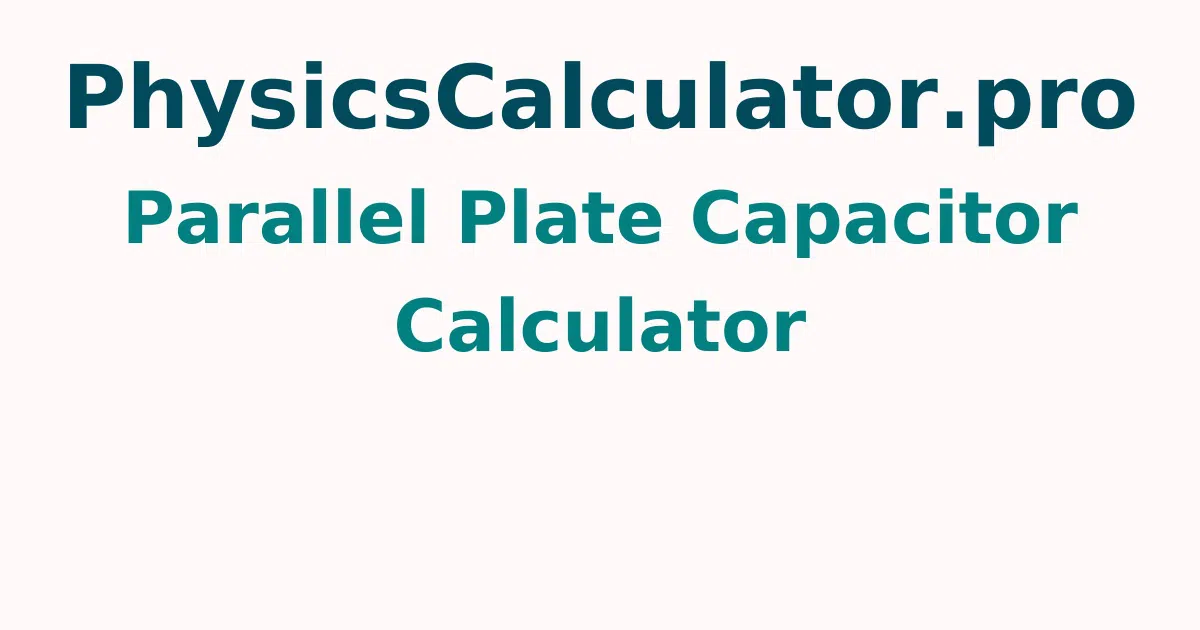Parallel Plate Capacitor Calculator
This parallel capacitor calculator can help you to find out how much capacitance a circuit will produce. Up to 10 different capacitors can be connected in parallel. We also include the parallel capacitor formula, as well as an explanation of where it came from. We also go through the differences between series and parallel capacitors, as well as how they relate to resistor formulae.
What is Meant by Parallel Plate Capacitors?
A parallel plate capacitor is formed by the arrangement of electrodes and dielectric material in physics. The plates are charged and the eclectic field is formed between the two plates when the two parallel plates are connected across the battery.
The parallel plate capacitor is the name for this type of setup. However, it is only capable of storing a finite amount of energy before the dielectric field breaks down. The parallel plate capacitor is made up of two plates with area "A" that are separated by a distance "d." The capacitance of parallel plate capacitors is calculated using the formula,
Parallel Plate Capacitance Formula
The formula to calculate capacitance in a Parallel Plate Capacitor Circuit is given by the expression Parallel Plate Capacitor Formula, C = kε0 (A/d)
- Where, A = Area
- d = Separation distance between two plates
- k = Relative permittivity of the dielectric material
- ε0 = Permittivity of the space which is equal to 8.854 × 10^-12 F/m
For more concepts check out physicscalculatorpro.com to get quick answers by using this free tool.
How to use the Parallel Plate Capacitor Calculator?
The following is the procedure how to use the parallel plate capacitor calculator
- Step 1: In the input field, enter the area, separation distance, and x for the unknown value.
- Step 2: To calculate the capacitance value, click the "Calculate x" button.
- Step 3: Finally, in the output field, the parallel plate capacitor's capacitance will be displayed.
Parallel Plate Capacitance Examples
Question 1: Calculate the capacitance of a parallel plate capacitor in the air with an area of 5.2 m^2 and a separation distance of 0.7m between the two plates.
Solution:
Given: A = 5.2 m^2
d = 0.7 m.
ε0 = 8.854 × 10^−12 F/m
C=kε0 (A/d)
C =(1)(8.854 × 10^−12) (5.2/0.7)
C = (1)(8.854 × 10^−12 ) (7.42)
C = (7.42)(8.854 × 10^−12 )
C = 6.57× 10^−11
C = 6.57× 10^−11 F
Hence, the capacitance of the parallel plate capacitor is 6.57× 10^−11F.
FAQs on Parallel Plate Capacitor
1. What are parallel plate capacitors and how do they work?
The simplest capacitor design is a parallel-plate capacitor, which consists of two metal plates separated by a gap: electrons are placed on one plate (the negative plate), and an equal number of electrons are taken from the other plate (the positive plate).
2. What does it mean to have a parallel capacitor?
Capacitors in parallel refer to capacitors that are connected in parallel when both of their terminals are connected to the terminals of another capacitor. Additionally, the voltage (Vc) connected across all capacitors connected in parallel is the same.
3. What is the purpose of the capacitor?
A capacitor is a device for storing electrical energy that consists of two insulated conductors in close proximity.
4. Why is a parallel capacitor used?
Capacitors are electronic devices that store electrical energy as a charge. Because the equivalent capacitance of all capacitors involved is the sum of their individual capacitances, connecting several capacitors in parallel allows the circuit to store more energy.
5. How are capacitors made?
A capacitor is made up of two metal plates and a dielectric material that acts as an insulator. The metal plates are parallel and placed quite near together, but the dielectric lies between them to keep them from touching. Aluminium, tantalum, silver, or other conductive metals are used to make the plates.
